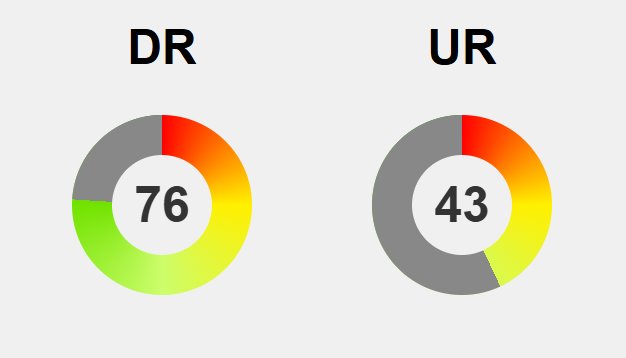Discover the essential secrets to maximizing your summer tires’ lifespan and saving money in the process. Are you aware that simple habits like regular pressure checks, visual inspections, and timely rotations can drastically extend tire life and improve safety? As temperatures rise, tires face increased wear from hot pavement and uneven surfaces—yet many drivers overlook routine maintenance, risking premature replacements and dangerous failures. Advances like tire sensors and monitoring systems offer new opportunities for proactive care, but widespread adoption remains slow. How can you leverage these tools and habits to prevent problems before they escalate? By understanding the impact of heat on rubber, and embracing consistent, preventive practices, you not only enhance handling and safety but also preserve your investment. This guide reveals how minor daily habits, combined with modern technology, can transform your summer driving experience—making every mile safer, smoother, and more cost-effective.

Ensure Safety and Save Money with Proper Summer Tire Maintenance
Summer tires play a crucial role in how your vehicle performs when the weather heats up. As temperatures rise, the demands on your tires increase—hot pavement, sudden stops, and uneven surfaces all challenge their integrity. Proper care during this season isn’t just about maintaining performance; it’s about ensuring safety and saving money in the long run. When tires are well-maintained, they grip the road better, handle more reliably, and wear more evenly, which means fewer replacements and fewer surprises on the road.
Many drivers underestimate how much simple tire care routines can extend the lifespan of their summer tires. Regularly checking tire pressure is one of the easiest and most effective steps. Underinflated tires wear out faster and can compromise your grip, especially in the heat. Conversely, overinflation causes uneven tread wear and a rougher ride. Making it a habit to check your tires at least once a month, especially before long trips or heavy loads, keeps them within the recommended pressure range. This small effort can significantly improve safety and efficiency.
Visual inspections are equally important. Taking a few minutes to look over your tires for cuts, cracks, embedded stones, or uneven tread wear can prevent minor issues from turning into costly repairs or dangerous failures. Tread depth is a quick indicator of how much life your tires have left—once it gets too shallow, replacement is necessary. Checking sidewalls for bulges or damage can also reveal early signs of wear that need attention. Catching these problems early keeps your tires performing at their best and avoids unexpected breakdowns.
Rotating your tires regularly is another simple but powerful way to promote even wear. Over time, certain tires wear faster depending on your driving style and road conditions, leading to uneven tread patterns. Rotations every 5,000 to 8,000 miles—roughly every six months—help distribute this wear evenly across all four tires. If you’re comfortable doing it yourself, it’s a quick task; if not, scheduling rotations with your mechanic ensures your tires wear uniformly, extending their lifespan and maintaining optimal handling.
Wheel alignment and balancing are less obvious but equally critical components of tire care. Misaligned wheels cause uneven tread wear and can impair handling, especially on rough summer roads. Unbalanced tires lead to vibrations and uneven wear, reducing the life of your tires and compromising comfort. Regular checks—particularly after hitting potholes or curbs—are worth the effort. Correct alignment and balancing improve tire longevity, safety, and your driving experience, making your summer travels smoother and more predictable.
Tread depth is vital for safe driving, especially in wet conditions common during summer storms or sudden downpours. Using a simple tread gauge or the penny test can help you gauge whether your tires still provide enough grip. If the tread is worn down to 2/32 of an inch or less, it’s time for replacements. Worn tires increase the risk of hydroplaning and reduce stopping power, which can be dangerous in unpredictable summer weather. Staying vigilant about tread wear ensures your tires are ready to handle whatever the road throws your way.
As temperatures climb, rubber softens and wears more quickly, making routine checks even more important. Underinflation and pressure fluctuations happen more frequently in the heat, accelerating tire aging. Regularly inspecting your tires for early signs of damage or uneven wear, combined with maintaining proper pressure, can prevent costly repairs and dangerous situations. Simple habits like these create a strong foundation for safer, longer-lasting summer tires.
Taking a proactive approach—checking pressure, inspecting for damage, rotating, and ensuring proper alignment—sets the stage for effective summer tire care. These habits help catch small issues early, prevent uneven wear, and keep your tires performing reliably in challenging conditions. When you stay attentive and consistent, you’ll notice the benefits in every drive: safer handling, better fuel efficiency, and fewer expenses. Proper tire care isn’t complicated, but it makes a big difference in how smoothly and safely your vehicle runs all season long.

Master the Fundamentals of Effective Summer Tire Care
Maintaining your summer tires starts with mastering some fundamental practices that keep them performing their best throughout the season. The first crucial step is regularly checking the tire pressure. Underinflated tires wear out faster, reduce grip, and can compromise safety—especially in hot weather when the road heats up. Overinflation, on the other hand, causes uneven tread wear and a harsher ride. Developing a habit of inspecting tire pressure at least once a month, and before long trips or when carrying heavy loads, ensures your tires stay within the recommended range. Always consult your vehicle’s manual or the tire placard on the door frame for the correct pressure, and use a reliable gauge to get accurate readings.
Visual inspections are just as vital. Spend a few minutes each month examining your tires for any signs of damage or uneven wear. Look closely at the tread depth—once it becomes too shallow, your tires are nearing the end of their useful life. Check for cuts, punctures, cracks, or bulges on the sidewalls and tread surface. Embedded stones or debris can cause damage over time, so removing these promptly can prevent small issues from escalating. Additionally, inspect the valve stems for leaks or cracks. Catching these early can save money and help you avoid dangerous blowouts on the road.
Rotating your tires regularly is one of the simplest ways to promote even wear and extend their lifespan. Over time, certain tires wear faster depending on your driving style, road conditions, and your vehicle’s weight distribution. Generally, rotating every 5,000 to 8,000 miles—about every six months—helps ensure each tire wears evenly. If you’re comfortable doing it yourself, it’s a quick task, but most drivers find scheduling rotations with their mechanic more convenient. This routine not only prolongs tire life but also maintains consistent handling and safety, especially in demanding summer conditions.
Wheel alignment and balancing are often overlooked but are essential for keeping your tires in top shape. Misaligned wheels cause uneven tread wear and can impair handling, which is particularly important when roads are rough or wet. Unbalanced tires can lead to vibrations, uneven wear, and a shorter lifespan. Regular checks—especially after hitting potholes or curbs—help identify issues early. Proper alignment and balancing improve tire longevity, enhance your driving comfort, and ensure your vehicle responds predictably on summer roads, making every trip safer and more comfortable.
Tread depth remains a key indicator of how well your tires can handle wet conditions and sudden stops. Using a simple tread gauge or the penny test helps you gauge whether your tires still grip the road effectively. If the tread has worn down to 2/32 of an inch or less, it’s time for replacements. Worn tires increase the risk of hydroplaning, reduce braking performance, and can cause dangerous accidents in summer storms or unexpected weather changes. Staying vigilant about tread wear and replacing tires before they become unsafe keeps you prepared for anything the road throws your way.
Finally, remember that summer heat accelerates tire aging. Rubber softens, wears more quickly, and pressure fluctuations happen more often. Routine checks become even more critical during these months. Maintaining proper pressure, inspecting for early signs of damage, and staying on top of rotations and alignments all help prevent costly repairs and dangerous situations. These simple, proactive habits create a solid foundation for safer, longer-lasting summer tires. When you integrate them into your regular routine, you’ll enjoy more reliable handling, better fuel efficiency, and peace of mind on every drive, no matter how hot the pavement gets.

How Driver Habits and Technology Shape Modern Tire Maintenance
In recent years, the way drivers approach summer tire maintenance has evolved, but habits still vary widely. Some are diligent, checking tire pressure before long trips or after hitting rough roads, understanding that these routines help extend tire life and improve safety. Others tend to overlook regular checks altogether, waiting until they notice a problem—like a sudden decrease in handling or visible damage—before taking action. This inconsistency highlights a gap between awareness and practice. While many recognize the importance of tire care, few incorporate proactive habits into their routine, often leading to unnecessary wear and premature replacements.
Advancements in tire technology and the rise of innovative tools have changed the landscape of maintenance. Today, digital pressure gauges and built-in tire pressure monitoring systems (TPMS) provide quick, accurate insights into tire health. Vehicles equipped with these features can alert drivers instantly if pressure drops below safe levels, making it easier to address issues early. Despite these advantages, adoption remains uneven. Some drivers still rely solely on manual checks, which can be less reliable, or ignore these tools altogether. This uneven uptake means many are missing out on the benefits of real-time data that can prevent damage and ensure safety.
Many drivers underestimate how much proper tire care can actually extend their tires’ lifespan and boost safety. It’s common to see people ignoring signs of uneven tread or small cuts, dismissing them as minor. However, these small issues can escalate quickly if left unchecked—leading to irregular wear, reduced grip, or even blowouts. The tendency to delay inspections until a problem becomes obvious often results in more frequent replacements and higher costs. Recognizing the value of routine maintenance—like regular pressure checks and visual inspections—can dramatically shift this reactive mindset, saving money and reducing risks.
Fuel prices and rising costs of vehicle ownership are prompting more drivers to pay closer attention to their tires. Maintaining proper pressure and avoiding uneven wear not only enhances safety but also improves fuel efficiency—crucial during the heat of summer when tires endure extra stress. While awareness of these benefits is growing, many still neglect routine practices like tire rotations or early detection of wear. This inconsistency often leads to unnecessary expenses, as worn-out or damaged tires can cause higher fuel consumption and increase the likelihood of roadside failures. Making a habit of regular checks can turn these insights into tangible savings.
Despite increasing knowledge, a significant portion of drivers still approach tire maintenance reactively rather than proactively. They might only notice a problem after experiencing vibrations, noises, or a sudden loss of grip. This reactive approach often results in more urgent, costly repairs or premature tire replacements. Meanwhile, proactive drivers understand that simple habits—monthly pressure checks, visual inspections, and timely rotations—can prevent many issues before they develop. Encouraging this shift requires ongoing education and awareness of how small, consistent actions can lead to longer-lasting, safer tires.
The influence of technology is gradually transforming how drivers manage tire health. Devices like tire sensors that monitor tread depth and detect early signs of damage are becoming more common, especially in newer vehicle models. These tools provide real-time data, making it easier to catch problems early and avoid dangerous failures. However, their adoption remains limited to higher-end or recent vehicles, leaving many drivers dependent on manual inspections. As these technologies become more affordable and widespread, they have the potential to promote a more proactive, data-driven approach to summer tire care.
Driving conditions during summer—hot pavement, debris, potholes—accelerate tire wear and increase the risk of damage. Many drivers notice their tires degrade faster in the heat but fail to adapt their maintenance routines accordingly. Regular pressure checks, early detection of uneven wear, and timely rotations are essential but often overlooked, especially when busy or unaware. Recognizing the harsher summer conditions and adjusting maintenance habits can make a meaningful difference in tire longevity and safety. The shift toward more attentive, preventive care is occurring gradually, but widespread change depends on ongoing education and the adoption of smarter practices. By staying informed and proactive, drivers can better protect their tires, save money, and enjoy safer summer drives.
For drivers interested in taking their tire maintenance to the next level, exploring tire monitoring systems can be highly beneficial. These advanced tools offer real-time insights and help prevent issues before they become serious. To learn more about the latest tire technology and how it can enhance your driving safety, check out this comprehensive guide on tire monitoring systems.






